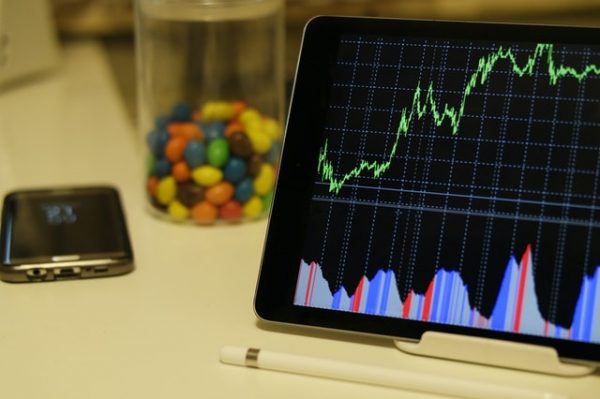Would you use a tool in your company that would help you to plan your production, to know the time it takes to meet the needs of your customers and to improve the service you offer them? Then you need to handle the concept of Lead Time, fundamental during the production, logistics and supply chain processes.
What is Lead Time
Lead Time, or cycle time, is the time it takes to carry out a process, usually repetitive. Throughout a company’s supply chain, this Lead Time can be subdivided into several smaller Lead Times that make up – though not necessarily add up to – our total Lead Time. For example, on the one hand we can have the Lead Time associated with how long it takes us to procure raw materials from our suppliers (Inbound Lead Time). Next we find how long it takes to transform these raw materials into the finished product (Manufacturing Lead Time). Once it is finished, sometimes it will spend a new period of time in inventory, waiting to be dispatched (and/or the time it has spent in inventory during its manufacture).
When the customer’s order arrives, what it takes us to receive and execute the order again can be measured in its own Lead Time (Order Lead Time, if we count the time until its delivery, or Order Handling Time, if we count it until we put in order goes). Finally, the logistics Lead Time is the one we use to bring the finished product to the hands of its final recipient.
Logically, not all these processes are carried out successively, waiting for one to finish before starting the next. The companies try to combine them, counting on the inventories and the demand forecast, which allow us that the total Lead Time is not the sum of its parts. If we believe that we are going to sell a certain number of pants of a model and a size, we will advance their manufacture, we will keep track of the stock in our stores and we will order them from the nearest warehouse so that we never run out of them in the store. Instead of waiting for a customer to order a pair of pants in the store to start ordering raw materials, manufacturing, shipping, etc.
It is difficult to predict demand in increasingly changing markets
This, told like this, seems very simple. But the amount of resources, investment and money that companies put into play to achieve this is hard to overestimate. Predicting demand in increasingly changing markets is difficult to get right, and unsold stock does not produce income. In the same way, the more quantity of product (finished, semi-finished or raw material) we store, the more our costs increase.
And sometimes we simply can’t go ahead or combine processes. A common example is the automobile sector, in which, since the products are expensive, the companies have less margin to assume that there is no stock left unsold. That is why the delivery times when we buy a car can be measured in months, since it is common for these to not be fully assembled (with their different versions, finishes and colors). This is the case of orders to order or production to order (make to order), which are made only once there is a purchase order from the customer. This can occur in products in which there is nothing manufactured or in others in which there are semi-finished versions.
A practical example
Suppose you are the advertising agency of a large commercial area at a national level and this commissions you to send all the graphic material about its offers so that the centers can place them in their premises. You are going to have very rigid delivery dates regarding when this advertising must be in public view, so you better measure your Lead Time well. How would you do it?
How long does it take to get going from when you receive the order? How long does it take to have the final arts? How long does your printing company take to make the materials that you have to distribute to the centers out of these final artworks? How long does your logistics take to pick up that finished product, at one or more points, and deliver it to its destination? In this example, several elements are added that increase the tension: the impossibility of advancing production by depending on offers or promotions that are not known in advance, the existence of deadlines and having to rely on a supplier halfway through the process for the manufacturing (the printing company, in turn, has its own Lead Time, its needs to stock up on paper, its availability, number of impressions per hour, etc.).
For the advertising agency to be successful, it will have to be very measured at all these times. Otherwise, meeting your client’s deadlines will almost be a matter of luck and chance.
Other Lead concepts
Time to improve the relationship with your client
We have already seen several of the terms and variants of lead time that exist. Finally, we are going to see two more that are especially significant when dealing with the client.
Requested Order Lead Time. It is the time between the entry of the order placed by the customer and the time in which the customer requests that the order be completed. This is very useful to know what the client’s orders are like, their demands and their habitual behavior. In this way, we can also adapt our production process to these needs (or detect if we are being too slow for what the market demands).
Quote Order Lead Time. It is the time agreed with the customer between receipt of the order and delivery. The vital thing about this point is that in order to be able to commit to these deadlines we must know all our lead time. As we have seen in the example of the advertising agency, we will fail in our commitment if we do not accurately measure all the factors involved in the process.

 Phenomenon Studio: Award-Winning Product Design & Innovation
Phenomenon Studio: Award-Winning Product Design & Innovation  3 Data-Driven Metrics to Watch During Your Next Sales Funnel Audit
3 Data-Driven Metrics to Watch During Your Next Sales Funnel Audit  How to Backup Your Dedicated Server Effectively
How to Backup Your Dedicated Server Effectively  Why Your Choice of Hydraulic Pump Motor Could Make or Break Your Industrial Operation
Why Your Choice of Hydraulic Pump Motor Could Make or Break Your Industrial Operation  Small Size in Microchannel Heat Exchanger Systems
Small Size in Microchannel Heat Exchanger Systems  Top Web Hosting Trends and How It Can Affect Your Business
Top Web Hosting Trends and How It Can Affect Your Business  Do Website Builders Affect Website Performance?
Do Website Builders Affect Website Performance? 

